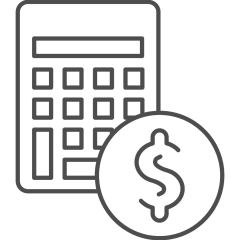While both dance teachers and dance education choreographers play integral roles in the field of dance education, they have distinct responsibilities, focuses, and skill sets.
Dance Teacher
Dance teachers primarily focus on instructing students in the technical aspects of dance, including movement vocabulary, technique, and performance skills. Their main responsibilities include:
- Teaching Technique: Dance teachers lead classes where they instruct students in specific dance styles, such as ballet, jazz, tap, or modern. They break down movements, demonstrate techniques, and provide corrections to help students develop proper form and alignment.
- Choreography Execution: While dance teachers may create choreography for student performances or competitions, their main role is to teach existing choreography to students. They ensure that students understand the steps, timing, and musicality of the choreography and rehearse with them to achieve precision and synchronization.
- Individualized Instruction: Dance teachers tailor their instruction to meet the needs of individual students, providing personalized feedback, corrections, and guidance to support each student's progress and development as a dancer.
- Performance Preparation: Dance teachers prepare students for performances, recitals, or examinations by coaching them in performance skills, stage presence, and presentation techniques. They may also assist with costume selection, staging, and technical aspects of performances.
- Classroom Management: Dance teachers create a positive and structured learning environment in the classroom, managing student behavior, maintaining discipline, and fostering a supportive atmosphere conducive to learning and artistic expression.
Dance Education Choreographer
Dance education choreographers focus on creating choreography specifically designed for educational purposes within dance education programs and initiatives. Their responsibilities include:
- Curriculum Integration: Dance education choreographers collaborate with educators and curriculum specialists to integrate choreography into dance education programs, lesson plans, and curriculum standards. They design choreographic concepts, thematic units, and performance pieces that support students' learning objectives and artistic development.
- Choreographic Design: Dance education choreographers create original choreography that aligns with educational goals, pedagogical principles, and curriculum standards. They design movement sequences, combinations, and routines that challenge students' technical skills, creativity, and expression while reinforcing key concepts and principles.
- Inclusive and Accessible Choreography: Dance education choreographers adapt choreography to accommodate the needs and abilities of diverse student populations, including students with disabilities, special needs, or varying levels of experience. They provide modifications, alternatives, and adaptations to ensure that all students can participate fully and succeed in dance education programs.
- Professional Development: Dance education choreographers provide professional development opportunities for dance educators, offering workshops, seminars, and resources to enhance their choreographic skills, teaching practices, and pedagogical approaches. They support the growth and development of dance educators in the field through mentorship, coaching, and collaboration.
- Community Engagement: Dance education choreographers engage with communities to promote access to dance education and foster cultural exchange, creativity, and social connection through movement. They collaborate with local organizations, artists, and stakeholders to create interdisciplinary performances, community events, and outreach programs that celebrate dance as a form of expression and cultural heritage.
In summary, while dance teachers focus on teaching technique and performance skills to students in dance classes, dance education choreographers specialize in creating choreography that supports educational objectives and enhances students' learning experiences in dance education programs. Both roles play complementary and essential roles in providing high-quality dance education to students of all ages and backgrounds.
Related Careers

Accountant
An accountant manages and analyzes financial records, prepares financial statements, and ensures compliance with regulatory requirements.

